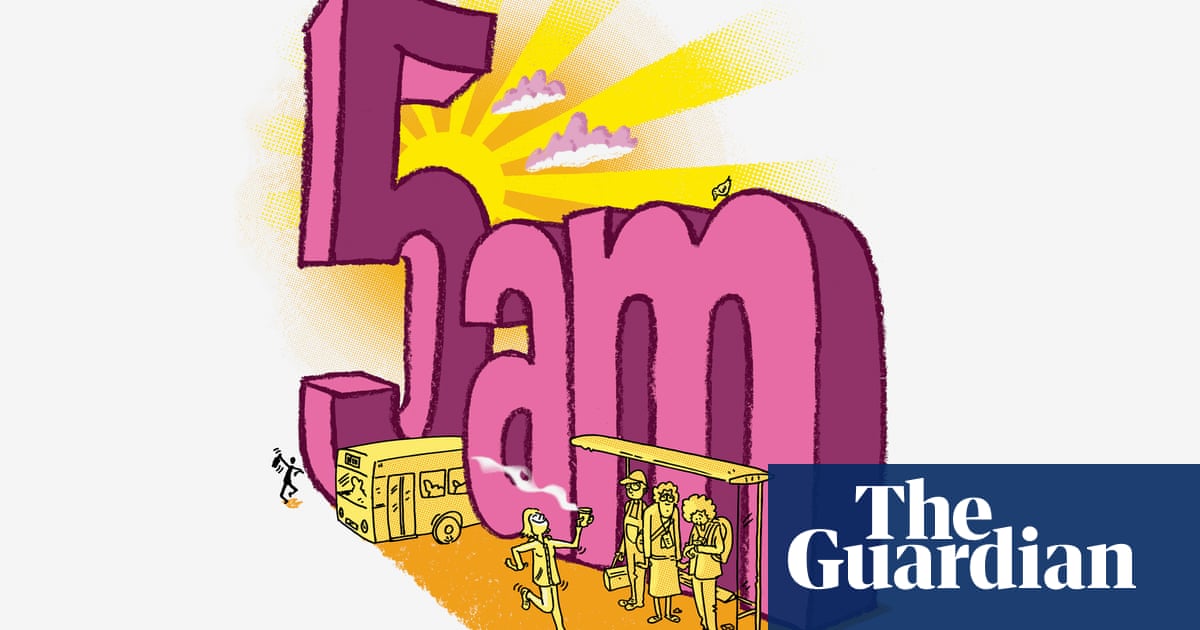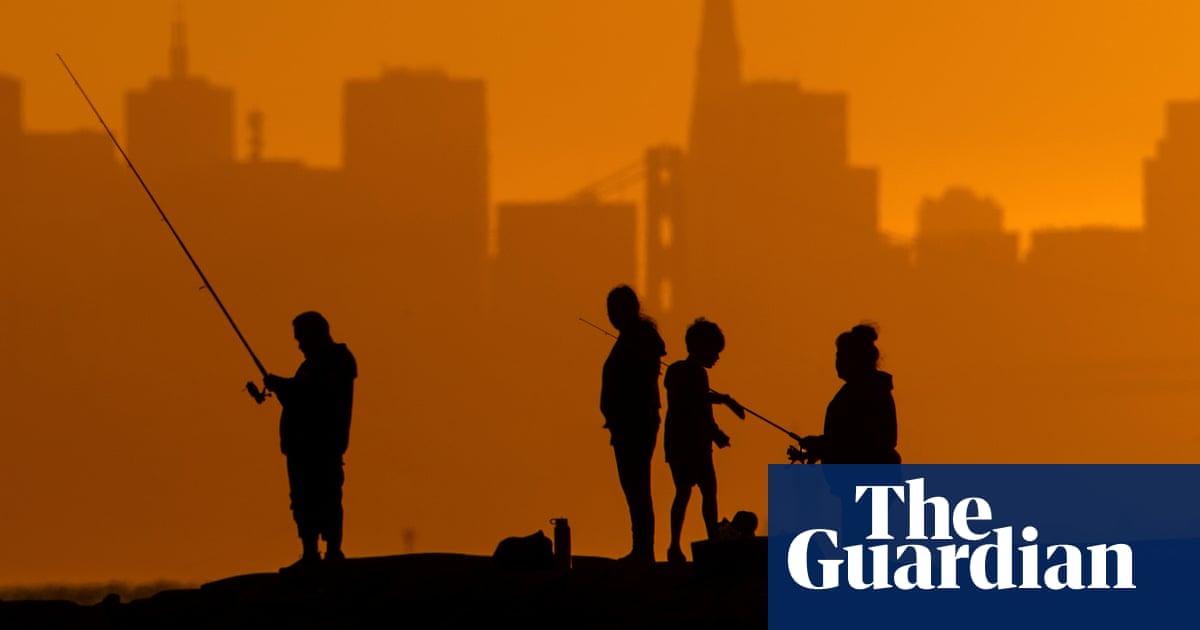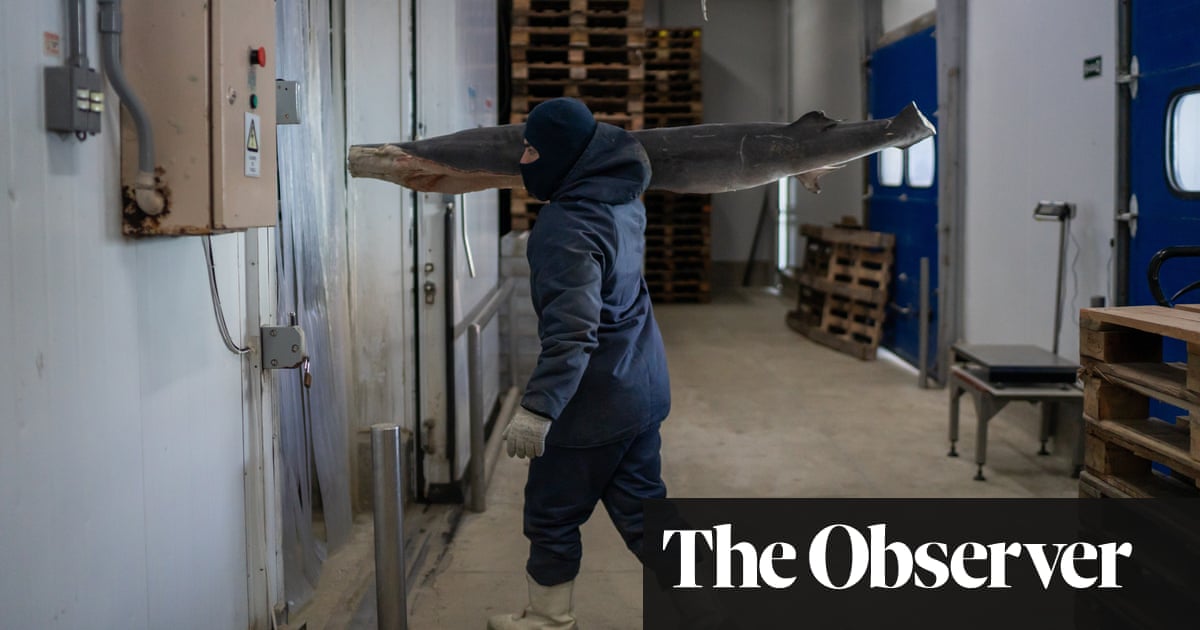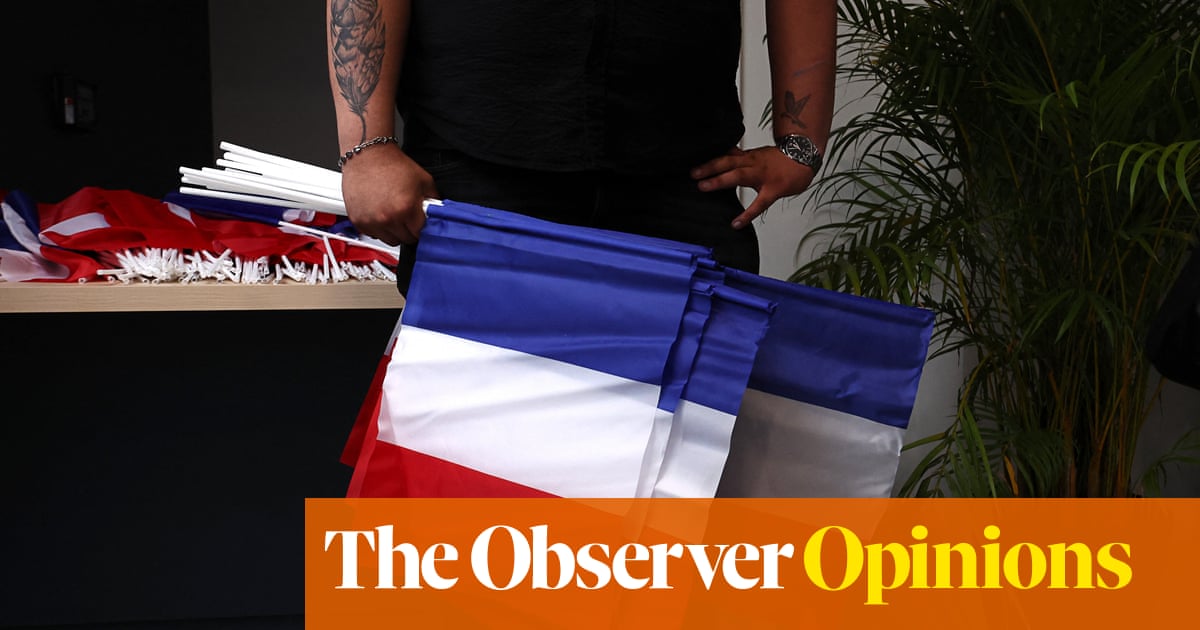It is 5.15am and I am walking down my street, feeling smug. The buildings are bathed in peachy dawn light. “Win the morning and you win the day,” suggests productivity guru Tim Ferriss. The prize is within my sights: an oat-milk latte, my reward for getting up ridiculously early.
The trains have not started running yet and the silence seems to magnify hitherto inaudible sounds. There is a mysterious squawk of gulls. I live in Camden, north-west London, many miles from the seaside. I have certainly never heard them here before.
I note that my neighbours’ gas meter is emitting a weird hum; should I ring their doorbell to let them know? Probably not. On to the deserted six-lane high street where supermarket delivery vans and the occasional bus are the only signs of life.
Perhaps the most poignant aspect of being up and about so early is that it unmasks the lie that London is a 24-hour city. Corner shops that I had assumed were open all night are locked behind graffiti-sprayed shutters. Aha, what is this I see? A human. He is listing from side to side, clearly heading home after a big night.
I pass the coach stop for the airport where three shift workers, discernible by lanyards and their lack of luggage, are staring glassily into the empty road. They are not exactly radiating winning-the-day exuberance.
Further along, outside the 24-hour gym, a couple clad in matching grey Lycra are huddled over a phone screen. Perhaps they are synchronising their workouts? I bid them a cheery good morning, but they scuttle inside like startled mice.
My mood starts to plummet. There is no coffee to be had at any of the eight shuttered cafes I pass, so I head for a patch of green space to meditate. En route, I realise a hooded man has fallen into step with me. Freaked out, I decide to head for home. Is the man following me? I look back. He is not. Lack of sleep is making me unhinged.
Why am I doing this? Because, in an attempt to become one of the elite superbeings who are members of the 5am club, I am trying a week of very early starts. Being an early bird is increasingly popular among the rich and famous, with everyone from Jennifer Lopez, Jennifer Aniston and the Kardashians to tech bros such as Facebook’s Mark Zuckerberg, Apple’s Tim Cook and Twitter founder Jack Dorsey subscribing to the club. So do Anna Wintour and Michelle Obama. Gwyneth Paltrow is a longtime member, sharing on Instagram how she rises at 5am for a 30-minute tongue scrape and Ayurvedic oil pull (me neither), before settling down for 20 minutes of transcendental meditation, followed by a dance workout devised by her friend, the fitness guru Tracy Anderson.
The extreme early start as a cultural phenomenon first exploded on social media, inspired by Robin Sharma’s book The 5am Club and other hashtag-friendly titles such as The Miracle Morning and Power Hour. Leadership guru Sharma’s catchphrase “Own your morning, elevate your life” has inspired legions of smug people – sorry, highly disciplined individuals – to share their impressive #5amClub routines (17.5m TikTok posts).
To a sceptic, there is a degree of magical thinking to much of this. If you can just do this one thing – get out of bed while others snooze – you will have time to get fit, eat healthily and achieve all your goals. Still, after scrolling through a tsunami of turmeric lattes, gratitude journals and sun salutations, I am sufficiently inspired to try it.
Although I am not what you would call a natural lark, my relationship with time was transformed during the pandemic, in common with many others. With nowhere to go in the evening, staying up late became pointless. Gradually, my wake-up time got earlier. As a photographer, rising at dawn to catch the best light makes a lot of sense too.
By January 2021, I had begun a lockdown project of climbing to the top of Primrose Hill near Camden Town to photograph the sunrise. Inscribed on the viewing platform are words by the poet William Blake. “I have conversed with the spiritual Sun. I saw him on Primrose Hill.” There was something about that pale violet stillness, as I stood alone with other sunrise watchers, that felt as close to a sacred experience as I had ever witnessed in London.
The early rising habit stuck, but not the brisk walks. Ordinarily, I get up at 6.30am without an alarm. I am not at my best at this hour. I mainline instant coffee and doomscroll for 90 minutes, and then it is time to get ready for work. Could rising at 5am and following a structured routine make me productive and focused? I commit to doing it for a week.
The night before I begin, I go to bed at 9pm with Sharma’s audiobook and soon fall into an unusually deep sleep. At 4.50am, my alarm, set to Arcade Fire’s Wake Up, blares out of my phone at top volume. There is a thud from above: I have accidentally recruited my neighbour into the 5am club.
I make coffee and slump on the sofa. But then I remember this isn’t allowed. I must instead follow the book’s 20/20/20 formula. From 5am to 5.20am you do some form of vigorous exercise; 5.20am to 5.40am is for meditation and journaling; and from 5.40am to 6am, it is time for reading or learning. I feel terrible, despite having had eight hours’ sleep.
The gym is out of the question, and luckily it is closed. I decide to do some meditation, which is lovely, but 40 minutes later I have pretty much dozed off. I feel exactly like you do when you have got up early to catch a flight, except I am not going anywhere. There is a sense of anticlimax, and also of raging hunger. Somehow, my appetite regulation has gone haywire. I have porridge, then toast, then two pancakes, then a nut bar. By lunchtime, I feel queasy and also freezing cold. The day passes in an unproductive fog.
Day two is much worse, because, for some reason, I have a terrible night’s sleep. Groggily, I get out of bed and stumble into the kitchen to put on the kettle. In the process I knock over an open box of porridge oats. I unleash a stream of Glaswegian swear words and then hear a door slamming above me. Oh dear.
Onwards to the yoga mat. But downward-facing dog leaves me feeling dizzy, so I stop. I move on to journaling, but all I can think of to write is: “I want to go back to bed, please.” I do a quick round of Duolingo to tick the “learning” box, but that lurid-green owl isn’t an ideal dawn companion.
It is now 6am and the whole day stretches ahead of me. But I can barely summon the energy to get off the sofa, let alone get on the tube and go to the office.
I attempt to do some work; the day passes slowly, but then I have a strange sense of anticipation that something lovely lies ahead. What is it, I wonder. Then it dawns on me – only five hours and I can go to bed.
Day three is equally dismal, mostly because I sleep in until 8am and then remember I have to go to a meeting on the other side of town. Gratitude journaling will have to wait.
Why is this so hard? I put the question to Russell Foster, head of the Sleep and Circadian Neuroscience Institute at Oxford University. But he wants to know why I would want to sign up for the 5am club in the first place. To say he is scathing about the fetishisation of the early start would be an understatement. “There’s nothing intrinsically important about getting up at 5am. It’s just the ghastly smugness of the early start. Benjamin Franklin was the one who started it all when he said, ‘Early to bed, early to rise makes a man healthy, wealthy and wise’ and it’s been going on ever since. It goes back to the Protestant work ethic – work is good and if you can’t or won’t work, that is, by definition, bad. Not sleeping is seen as worthy and productive.”
There is plenty of research indicating that getting up early can make you happier, and even eat more healthily. However, Foster points out a major pitfall. “In order to get enough sleep, many people would need to go to bed at 9pm. Unfortunately, most of us aren’t able to do that because we have all this stuff we need to do, whether that be helping kids with homework or putting a load of washing on. So, the danger is, we don’t actually get to bed when we should, and another factor is that other people are likely to still be making a noise around you, so how are you going to get to sleep?”
He also points out that the most enthusiastic exponents of these regimes are people who can afford to outsource life admin. “These productivity gurus and entrepreneurs have money to pay people to do everything. Imposing this schedule on other people is punitive and it’s also boastful: ‘Oh, aren’t I a great person; why don’t you become more like me?’ Truth is, most of us can’t afford to.”
Foster raises some excellent points, but I am still keen to master an earlier wake-up. Will it get easier over time? Sleep psychotherapist Heather Darwall-Smith isn’t so sure. “We each have a chronotype that determines our body clock. Everyone knows there are people who are morning larks and others who are night owls,” she says. “But actually, most people fall somewhere in between. So, there will be people who can go to bed at 10pm and wake naturally at 5am, and it’s a routine that fits with their chronotype. But many of us are not like that. And let’s not forget, there are lots of people who have a 5am wake-up imposed on them by their work shifts.”
By day four of my experiment, I am grumpy and miserable. I’ve had to cancel a trip to the pub because, newsflash, an evening of merlot and a dawn wake-up isn’t a good combination. I’ve also become borderline insufferable. “Late night?” I ask a colleague who is yawning at the advanced hour of 11am. I really want to mention that I’ve been up for SIX WHOLE HOURS, but wisely desist. People might get jealous of my self-discipline.
Day five is a new low. I sleep in until 5.43am and then eat a salted caramel Magnum for breakfast to compensate for missing out on the pub. Morning six is more successful. I have a deadline looming and welcome the extra time to get ahead. Day seven is the fruitless coffee odyssey and I realise that going outside definitely does make me feel a lot more energised and upbeat.
I decide to talk to some non-celebs who have made the 5am club work for them. Jenny Wilson, a colour therapist, gets up every morning at 4.55 and, while the rest of her family sleeps, has a quick shower before creeping into the spare room to start her day.
“I call it my bewitching hour because as long as I have this time for myself, the rest of the day falls into place like magic,” she says. Her ritual is always the same – 30 minutes of yoga followed by 20 minutes of meditation, ending with speaking her intentions for the day aloud. “After that, I’m ready to make breakfast for my children and get on with my life. It means I start the day with a feeling of accomplishment, that I’ve already done amazing things before anybody else is up.”
Probation officer Quynh Nguyen-Dang has been following an early morning routine since January, after reading The 5am Club. Every morning, she sets her smartwatch to vibrate at 4.30 and then again at 5. She puts on her workout gear, gets in her car and drives to her local gym to do 30 minutes of cardio. “It’s a beautiful drive, so peaceful. The other morning I stopped to admire the pink candyfloss clouds. When I’m in the gym, I often send emails and update social media for my fashion business side hustle while I’m pedalling away. There are only so many hours in the day and this is a great way to get ahead. It’s like a secret society. I see the same group of women there every morning. Afterwards, we’re all lining up at the mirror, doing our hair and getting ready for work.”
However, adopting such a punitive regime comes at a cost. “I turn into a pumpkin at 9pm,” she says. “I feel bad if I have to say no to seeing people after work but on the weekends I do tend to sleep later.”
On day eight, I wake up at 5.04am without an alarm. The morning beckons. Do I bound out of bed to seize the day? I do not. I decide to return to my usual wake-up time, only now with a renewed focus. The week hasn’t been a total waste of time – far from it. What it has made me realise is how much time I was wasting before, particularly in the morning. It’s not when you get up that matters – it’s how you choose to use the precious minutes you have that really counts.









